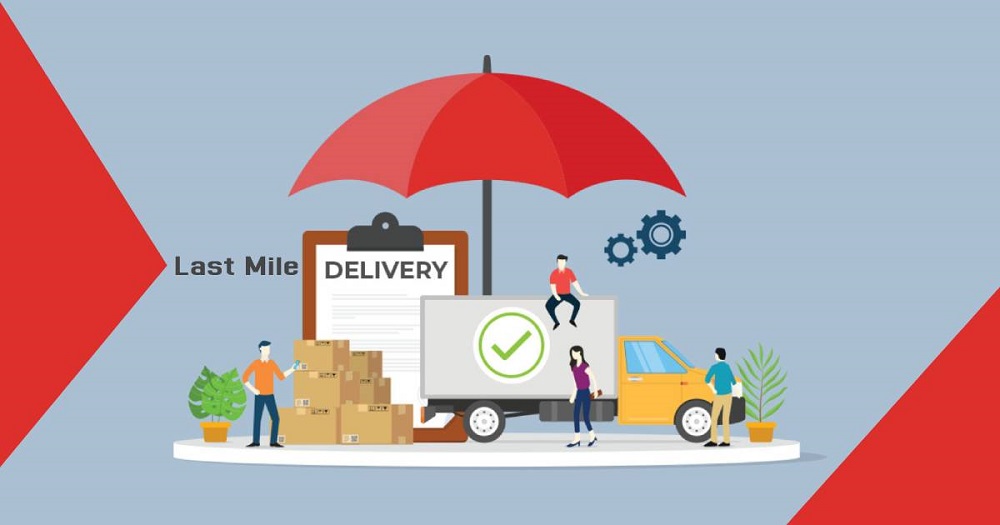Last mile delivery software is a popular term used by companies in the supply chain management field and also in transportation planning to define the final leg of a shipped product, usually lasting from a shipping hub to its ultimate destination.
This last-Mile consists of three main legs:
- the transport infrastructure,
- logistics
- Drivers.
These three key components of the supply chain need to work in perfect order to ensure that a shipment reaches its customers on time and under budget. If any one of these elements fails to do so, delays and delivery failures may result.
Last-Mile Delivery Key Factors
- Delivery Scheduling
- Real Time tracking of shipments
- Route Optimization
- Analytics and reporting
Supply chain management and final mile delivery software provides the key factors for scheduling, managing and monitoring the last-mile delivery of a shipment. It does this through the efficient use of logistics processes such as planning and scheduling routes, checking and collecting payment information and performing checks as well as cross checks with other third-party logistics systems such as the last-mile carrier.
Driver Performance Analysis
Apart from these activities, it also provides the means for analyzing the performance of drivers and logistics infrastructure. All these functions are performed by a specific application that is integrated into the company’s computer system or Web portal. This makes the whole process seamless and allows the company to view all activity in real-time.
Order Processing
The most common logistics function used in the last-mile delivery process is the order processing. The order process starts when an order is received from an e-commerce customer. The order is processed and tracked through the amazon fulfilment network. Amazon’s web portal then sends an order confirmation email to the customer’s registered email address and arranges for the delivery of the requested product.
Amazon Lat-Mile Delivery
Amazon’s ecommerce businesses use their own delivery management system to deliver products directly to the customers. The system includes a combination of transport carriers as well as specialized last-mile delivery carriers that are located throughout the world. This enables ecommerce businesses to obtain fast delivery options to their customers. The speed of delivery depends largely on the distance between the delivery hub and the location of the actual customer.
Pickup and Delivery Management
Apart from this, a number of other logistics functions are executed using the same Last-mile technologies. These include order pick and place, real time inventory management, real-time inventory updates and orders, detailed sales and marketing reports, real-time freight and customs information and last-mile delivery software coordination.
The order picking and placement services are provided by both the ecommerce websites as well as third-party logistics providers. Feeding the information required by the customers to these entities, including address lists and shipping addresses, enables them to efficiently locate a secure, accessible and convenient location for pickup and delivery of goods. In case of the latter, the feed connects the fulfillment company with the trucking and delivery companies to provide immediate service.
Another form of logistics operation is
Real time inventory management.
The system enables ecommerce web portals to maintain and update their inventory data in real time, thereby eliminating possible data errors and saving valuable operational hours. Apart from providing instant updated results, real time inventory management also ensures that the supply chain running through the various units is simplified, thereby allowing fast completion of necessary tasks.
The last-mile delivery service also delivers complete packaged delivery of the products to the final consumers. In this manner, an efficient customer relationship program is established, which in turn strengthens the overall ecommerce presence.
Challenges of eCommerce Delivery
Another major transportation hub problem faced by many ecommerce websites is that of heavy and large volumes of product inventory that must be shipped across long distances in order to maintain business. In such cases, either the transportation hubs or the shippers do not possess the requisite infrastructure and experience to safely transport large volumes of goods. A recent study by the American Society of Metabolic Engineers revealed that a large number of metros suffer from last-mile delivery failure problems.
Last-mile failure occurs when an ecommerce vendor does not have the required assets to transport the ordered goods across long distances. Most often, these failures are due to poor logistics planning, and the lack of adequate communication between vendors and shipping providers.
Last-mile delivery Solutions
Last-mile delivery issues can be solved by utilizing either FedEx or USPS services.
- FedEx, for example, ecommerce websites can establish direct shipping arrangements with distributors or suppliers of the goods they wish to sell. As most of the goods that are shipped using FedEx are generated in the US, contact with distributors and suppliers within the US is not a problem, since FedEx services are global.
- USPS – On the other hand, using USPS services requires ecommerce sites to open an account with the US Postal Service in order to process orders received via mail.
Author Bio:
Santosh Pawar is a Digital Marketing expert at Deliforce Pvt Ltd which is known for developing top-notch Last Mile Delivery Software. He believes in sharing his strong knowledge base with leaned concentration. He helping digital businesses to open new markets and boost sales.


